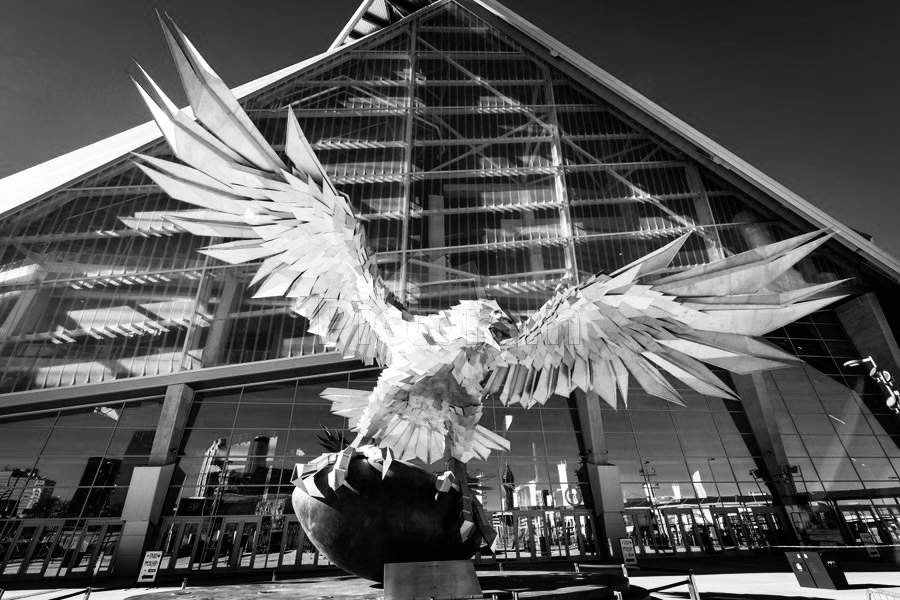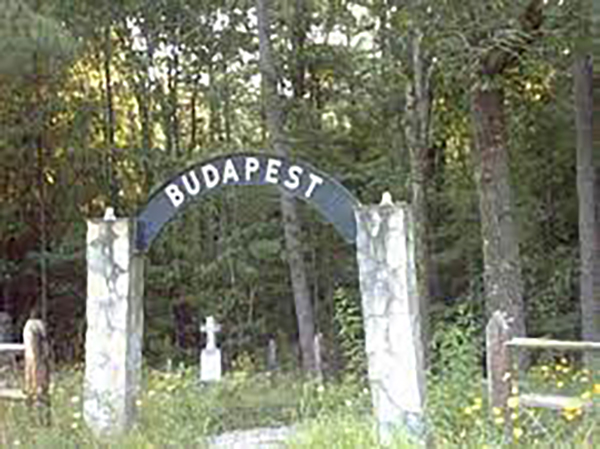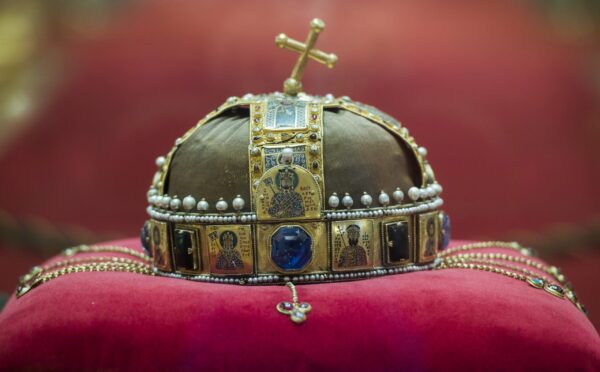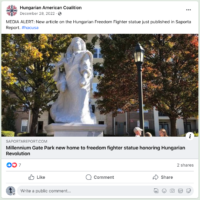The Georgia / Hungary Connection
Take a closer look at some of the historic connections between Hungary and the state of Georgia:

Atlanta Falcon Statue
In 2017, Budapest-based Hungarian artist Gábor Miklós Szőke, created the Atlanta Falcon Statue to welcome visitors and fans to the Mercedes Benz Stadium in downtown Atlanta. The falcon sculpture took 2 years to complete and was reconstructed 4 times from Budapest to Atlanta. The largest bird statue in the world is comprised of thousands of stainless-steel pieces and a huge bronze football, standing about four stories tall and weighing 73,000 pounds. All in all, 200 professionals worked on the statue including: sculptors, welders, project managers, 3D modelers, and engineers.
Budapest, GA (Haralson County)
Just over one hour outside of Atlanta in Haralson County is Budapest, Ga, founded in the late 1800s by 200 Hungarian families from mining communities in Pennsylvania who relocated to establish a vineyard. Budapest was the largest of three communities including Tokaj, and Nyitra. These Hungarians built a Catholic Church, school and rectory for their flourishing community. But due to Prohibition in 1908, the winemakers were forced to move back North. Although the town no longer exists, there is a Georgia Historical Society marker near the first settlement and the Society actively maintains the Budapest Cemetery.


Replica of St. Stephen’s Holy Crown
A replica of St. Stephen’s Holy Crown is on permanent display at the Jimmy Carter Presidential Library and Museum in Atlanta. Hungarians entrusted the original to U.S. Army officers at the end of WWII to prevent it from falling into the hands of the advancing Soviet army. It was returned to Hungary in 1977 by President Jimmy Carter despite the protests of Hungarian Americans who objected to presenting the crown to the communists in power. The reproduction of the Crown was presented to Carter in 1998 by His Excellency Árpád Göncz, President of the Republic of Hungary.
Fox Theater
The Fox Theater was completed in 1929, after movie mogul William Fox, funded the $2,75 M project and bought a 21-year lease to the theater. Fox was born as Vilmos Fried in Tolcsva, Hungary and came to the U.S. when he was 9 months old. He was a pioneer of the American motion picture industry, establishing the Fox Film Corporation (1915) and Fox West Coast Theatres chain (1920s). Although Fox sold his interest in these companies, his name lives on as the namesake of the Fox Television Network and the 20th Century Fox film studio.

By Daniel Mayer - Own work, CC BY-SA 3.0, https://commons.wikimedia.org/w/index.php?curid=1819493

Rich’s Department Store
Hungarian immigrant Morris Rich founded Rich’s Department Store in 1867. Rich’s came to symbolize the retail shopping experience in Atlanta during the 20th century and is inextricably linked with the history of the city. The store showed remarkable commitment to its customers and the community. For example, during difficult times, Rich’s allowed struggling cotton farmers to pay for goods with bundles of cotton; the store honored teachers worthless checks during the Depression, and welcomed African American customers long before other stores did. Rich’s name merged in 2003 with Macy’s yet generations of shoppers remember the store as both an integral part of Georgia life and a southern institution.
Gone with the Wind
When the bestselling book, Gone with the Wind, was made into a movie, George Cukor, (born to Hungarian immigrants in New York City in 1899), was hired to direct it. Cukor spent two years working on the film during the pre-production process as well as coaching movie stars Vivien Leigh and Olivia De Havilland. Though Cukor was replaced when the actual filming began, he continued to work with Leigh and De Havilland off the set.

From left: Clark Gable, as Rhett Butler, Vivien Leigh, as Scarlett O'Hara, and and original director George Cukor on the set of Gone with the Wind in 1939. Metro-Goldwyn-Mayer


